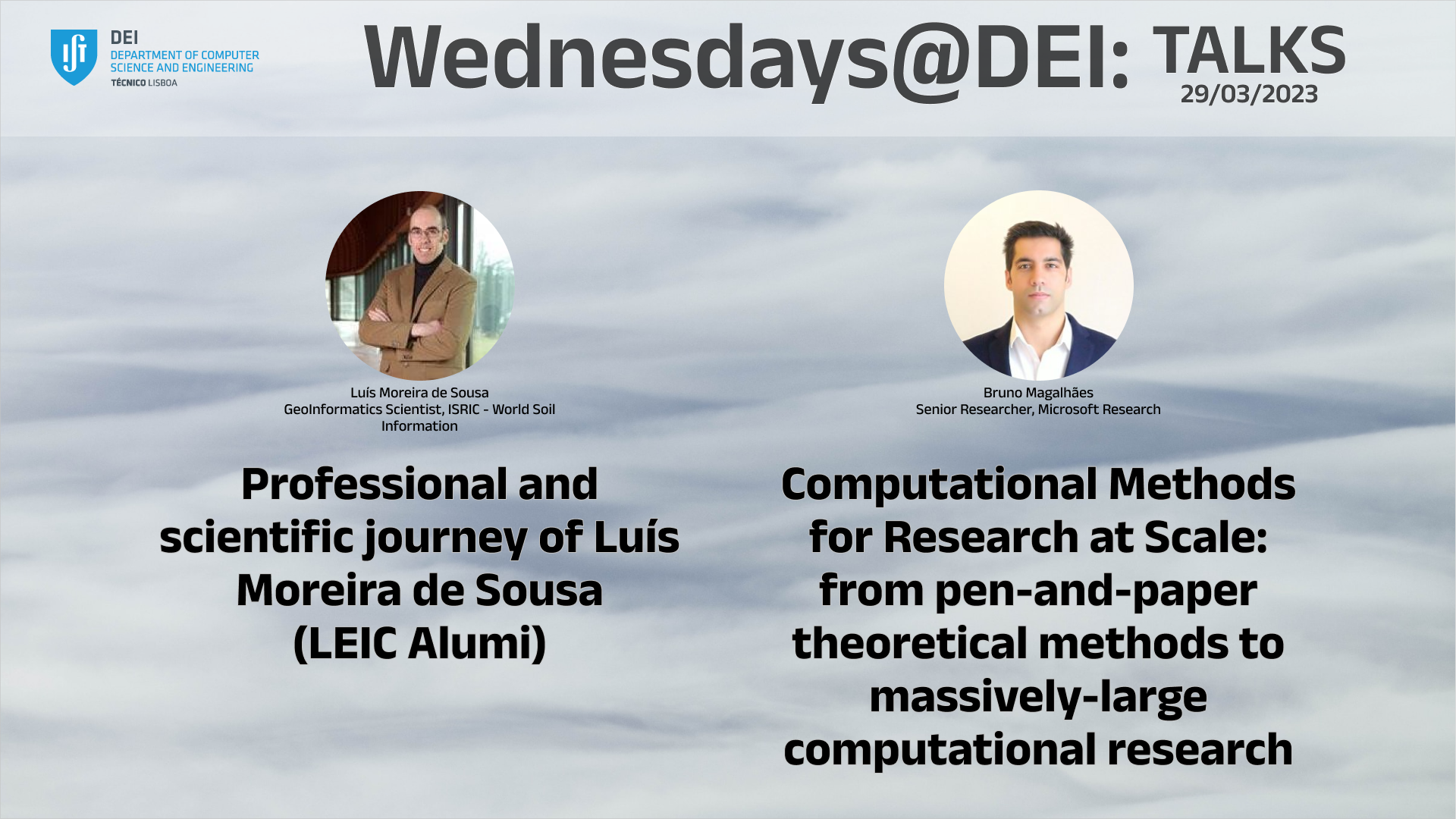Wednesdays@DEI: Talks, 29-03-2023

Author and Affiliation: Luís Moreira de Sousa, GeoInformatics Scientist, ISRIC - World Soil Information
Title: Professional and scientific journey of Luís Moreira de Sousa (LEIC Alumi)
Abstract: This seminar lays out some of the research matters tackled in recent years by Luís Moreira de Sousa. The discretisation of the geographic space with digital squared grids is one of the fundamental paradigms of Geographic Information Systems (GIS). However, it is yet far from being optimal or correctly representing the curved nature of the Earth. Hexagonal grids not only address the inefficiencies of squared grids, they open the door to a new generation of GIS, that instead of operating on the Cartesian plane, are based on the direct discretisation of the planet’s surface.
Nearly in parallel to the work conducted by the OMG resulting in the UML, the W3C developed a series of specifications for digital data exchange that came to constitute an alternative ontological infrastructure with the languages RDF and OWL. Known as the Semantic Web (SW), this infrastructure remained obscure for long years. More recently the transition from data service architectures based on SOAP/XML towards ReST APIs is lending new life to the SW. Within the framework of the European Union, for instance, data infrastructures prescribed by the INSPIRE directive can take a significant leap by adopting ontologies and best practices from the SW. Australia and New Zeeland are already in the advanced stages of SW adoption for data services. However, the SW is still far from being a full alternative to the relational paradigm in industrial processes of software development. This seminar leaves some reflections on this gap that is worth overcoming.
Bio: Luís Moreira de Sousa completed the Degree on Informatics and Computers Engineering at IST in 2002, which he complemented with a Masters on Geographic Information Systems at the DECivil department in 2005. He was in this department a junior researcher from 2002 to 2008, contributing to applied research projects with Instituto da Água and Estradas de Portugal. After a year as consultant with SIQuant at LNEC, in 2009 he became an independent consultant, supporting de development of the spatial data infrastructure of the newly created Administração da Região Hidrográfica do Tejo.
In 2011 he joined the Henri Tudor institute in Luxembourg as Research Engineer, where he contributed to the development of the Spatial Decision Support Systems on the domains of Energy and Urban Planning. At the time he was already a PhD candidate on Informatics Engineering at IST, promoted by Prof. Alberto Silva. In 2016 he concluded this graduation with a thesis on domain specific languages for the development of spatial simulation programmes. In that year he start a post-doc position at EAWAG (Swiss Federal Institute of Research on the Water Domain) during which he conducted research on rapid flood modelling and storm water network management. In 2017 he joined ISRIC - World Soil Information in The Netherlands where he conducts research on the geography and ontology of world soils.
----------
Author and affiliation: Bruno Magalhães, Senior Researcher, Microsoft Research
Title: Computational Methods for Research at Scale: from pen-and-paper theoretical methods to massively-large computational research
Abstract: We witnessed the transition from traditional analytical methods for computational research (cryptography, complexity,etc) to applied research at scale powered by High Performance Computing (HPC, particularly Simulation). These paradigms always coevolved side-by-side, because "in theory there is no difference between theory and practice, but in practice there is".
However, recently, large Machine Learning (ML) methods such as GPT4 rely on unexplainable/intractable ML and HPC to deliver impressive results that beat state-of-art across most scientific domains by several orders of magnitude. As academics, we ask ourselves: how can academic institutions be competitive in a world where big tech is now the main driver of most relevant contributions?
To that extent, I will present a historical overview of the main efforts on three domains: High Performance Computing, Simulation and Machine Learning. We will discuss HPC, Simulation and AI for Science. These discussions will be driven by personal experience and research on those topics, where we will discuss scope, methods, limitations and how to overcome them. Specifically, we will present parallelism, static- and dynamic load balancing, speculative computing, performance modelling, ML offloading, checkpoint, data- and model- parallelism, embeddings, probabilistic methods and several ML architectures. The use cases presented are the largest and most-detailed neural simulation at the Blue Brain Project at EPFL[1] (the 1-billion Euros EU flagship project) and (to be confirmed) the future storage systems from Project Silica at Microsoft[2]. We will finish with a brainstorming session on how academic programmes should evolve in order to prepare current youth for the workplace of the future.
[1] https://www.epfl.ch/research/domains/bluebrain/
[2] https://www.microsoft.com/en-us/research/project/project-silica/
Bio: 13+ years hands-on experience and research on High Performance Computing, Simulation and Machine Learning acquired as:
- Research Engineer for High Performance Computing at the Blue Brain Project, EPFL, Switzerland
- PhD and Postdoc at EPFL, Switzerland
- Senior Researcher at Microsoft Research, Cambridge, UK
